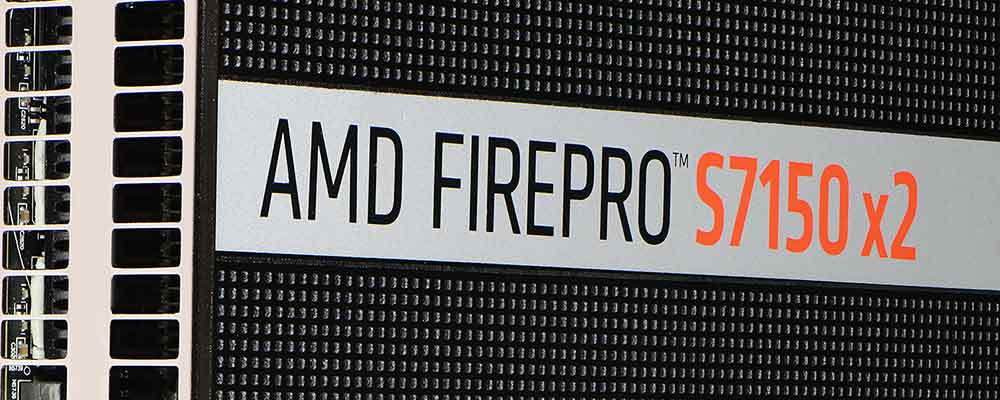
AMD FirPro GPUs deliver remote, shared professional GPU performance with hardware-based virtualization.
If you haven't looked into remote professional graphics solutions, then it is time to play catch up. The technology has been developing rapidly over the last five years from a special-case, one-to-one solution to fully hardware-based GPU virtualization. NVIDIA has been pioneering virtual GPUs with the company's GRID products. AMD FirePro graphics have also been delivering virtual graphics as well, and in early 2016 the company delivered the world's first hardware-based virtualized GPU solutions.
The over-arching benefit of a remote workstation with virtual graphics is the delivery of desktop graphics workstation performance to any device or computer in any location. The benefits, which in turn result from this ability, include improved security, better workstation resource usage, and a more flexible infrastructure.
In an interview on CADplace with AMD's Director for Virtualization and Cloud Graphics, Michael DeNeffe, he discusses the many benefits of multi-user, virtual graphics. This includes the ability to offer CAD access to more users more easily. It means that the company's priority data never leaves the server room which improves the protection of valuable intellectual property. System maintenance, support, and hardware ROI are improved by having one remote workstation in a centralized, secure location replacing multiple workstations distributed throughout the company. Of course users benefit with the ability to access their design applications and projects from any location: the office, the client site, at home, and from any device : desktop PC, notebook, tablet, or smart phone.
Mr. DeNeffe goes on to explain that hardware virtualization offers additional benefits. Managing the GPU virtualization in hardware, he says, allows products like the FirePro S7150 to provide a more consistent performance compared to software virtualized GPUs. He also notes that the AMD solution does not have an additional layer of software to manage virtualization which makes it more secure against potential security attacks. Last but not least, since there is no virtualization license attached to the AMD FirePro, the total cost of the solution is lower than competing products.
When it comes to the differences between AMD's new hardware-based virtualization and NVIDIA's GRID soluitions, PW has not had the opportunity to verify the claims being made by AMD. On one hand, it all sounds reasonable and would appear to make sense. On the other hand, the real-world, practical difference may be essentially zero. One area where we could envision a clear benefit is actually related to cost-savings on virtual-machine software licenses.
The PW Perspective
We've followed the remote workstation trends since the beginning. The technology has matured nicely and for the last two years, virtual GPU technology has been has been sufficiently developed to enable extremely productive solutions. While NVIDIA has been a highly visible player in GPU virtualization, AMD's hardware virtualization is a welcomed "world-premier" and certainly another step in providing faster, more secure, more affordable remote workstation solutions.
AMD recently released a new video on the FirePro S-Series with an introduction from Michael DeNeffe as well as comments from Gary Radburn, Director of Workstation Virtualization at Dell. In two minutes you will have a clearer picture of AMD's FirePro S-Series, so please take a moment and watch the video.





